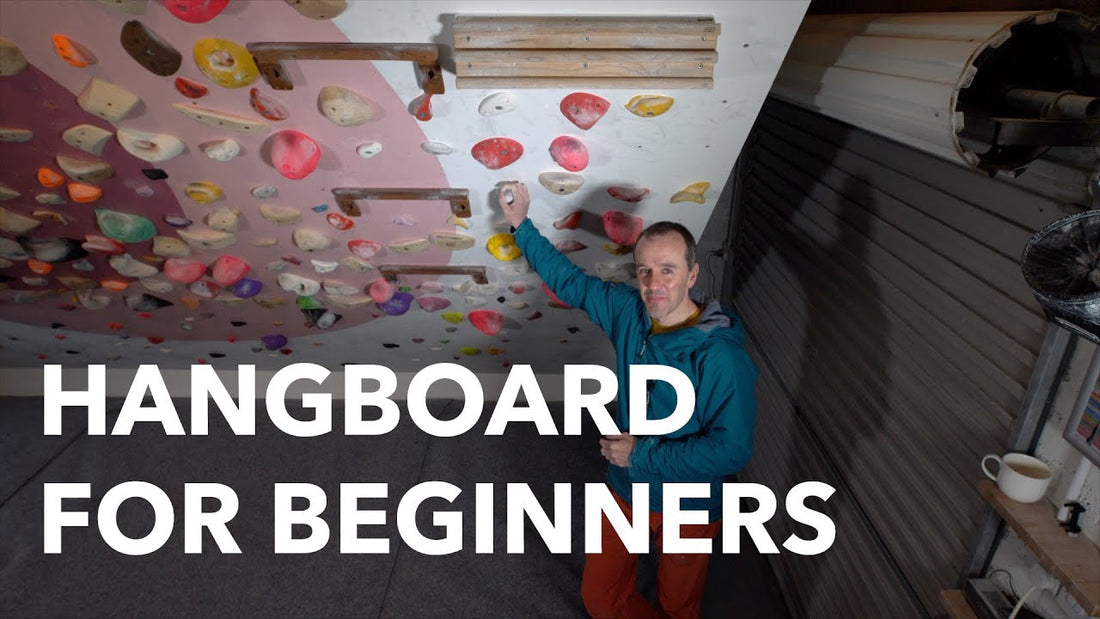
From Beginner to Pro: Building a Hangboard Training Plan
## From Beginner to Pro: Building a Hangboard Training Plan
### Introduction
Whether you're a newcomer to climbing or looking to take your skills to the next level, a well-structured hangboard training plan can be a game-changer. Hangboarding is an effective way to build grip strength, finger power, and overall climbing performance. In this article, we’ll guide you through creating a progressive hangboard training plan that caters to your skill level, ensuring that you advance from beginner to pro.
### Understanding Hangboarding
Hangboarding involves using a specialized board with various holds to improve grip strength and finger endurance. It’s particularly beneficial for climbers because it targets the specific muscles used in climbing. However, without a structured plan, hangboarding can lead to plateaus or even injuries. Let’s break down the steps to create an effective training plan.
### Step 1: Assess Your Current Level
Before you begin, it’s crucial to assess your current climbing level and grip strength. Here are some questions to consider:
- What is your climbing grade?
- How comfortable are you with different grip types (open hand, crimp, pinch)?
- Do you have any prior injuries or concerns?
This assessment will help you tailor your training plan to your specific needs.
### Step 2: Set Clear Goals
Establish clear, achievable goals that you want to accomplish through hangboarding. Goals can be both short-term and long-term, such as:
- **Short-term**: Improve hang times on specific holds or complete a certain number of sessions per week.
- **Long-term**: Increase your climbing grade by a specific level or master a challenging route.
Having defined goals will keep you motivated and focused on your training.
### Step 3: Create a Structured Routine
Your training plan should be structured, incorporating various aspects of hangboarding. Here’s a sample routine to get you started:
#### **Beginner (Weeks 1-4)**
**Frequency**: 2 times per week
1. **Warm-Up (10 minutes)**: Light dynamic stretches and easy climbing to increase blood flow.
2. **Strength Workouts (20 minutes)**:
- **Open Hand Hangs**: 3 sets of 7 seconds on, 3 seconds off on a large edge, with 2-3 minutes of rest in between.
- **Half Crimp Hangs**: 3 sets of 5 seconds on, 5 seconds off on a moderate edge.
3. **Cool Down (10 minutes)**: Gentle stretching focused on fingers, hands, and forearms.
#### **Intermediate (Weeks 5-8)**
**Frequency**: 2-3 times per week
1. **Warm-Up (15 minutes)**: Include mobility exercises targeting shoulders and fingers.
2. **Strength Workouts (30 minutes)**:
- **Repeaters**: 6 sets of 7 seconds on, 3 seconds off on a moderate edge.
- **Max Hangs**: 4 sets of 10-15 seconds on a challenging hold with longer rest periods (3-5 minutes).
3. **Endurance Workouts (20 minutes)**:
- **Ladders**: Hang for 30 seconds on varying holds with 30-60 seconds of rest.
4. **Cool Down (10 minutes)**: Focus on stretching and recovery.
#### **Pro (Weeks 9 and beyond)**
**Frequency**: 3 times per week
1. **Warm-Up (15 minutes)**: Dynamic stretching and light climbing.
2. **Strength Workouts (40 minutes)**:
- **Max Hangs**: 5 sets of 10-15 seconds on small holds with longer rest (5 minutes).
- **Weighted Hangs**: Use a weight vest or belt to add resistance on moderate edges for 10 seconds, resting for 3-5 minutes.
3. **Endurance and Power Workouts (30 minutes)**:
- **Aerobic Power**: 4 minutes of hanging (15 seconds on, 15 seconds off) for several sets with longer rests.
4. **Cool Down (10 minutes)**: Focus on recovery stretches.
### Step 4: Monitor Your Progress
Keeping track of your sessions is essential for long-term success. Consider using a training journal or app to log:
- Hang times
- Grip types used
- How you felt during each session
Monitoring your progress will help you identify trends, make adjustments, and celebrate your achievements along the way.
### Step 5: Incorporate Recovery
Recovery is a crucial aspect of any training plan. Ensure you’re getting enough rest between sessions and listening to your body. If you feel fatigued or sore, it’s better to take an extra day off than risk injury.
### Conclusion
Building a hangboard training plan is a rewarding journey that can significantly enhance your climbing abilities. By assessing your current level, setting clear goals, creating a structured routine, and prioritizing recovery, you can progress from a beginner to a pro in no time. Remember, consistency and patience are key. With dedication to your training plan, you'll unlock new levels of strength and performance in your climbing endeavors!
